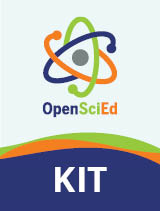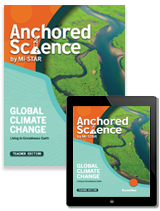Search Listing Name
product:
OpenSciEd Grade 3 Unit 3: Trait Variations Student Workbook
The OpenSciEd elementary science program aligns with all NGSS standards for elementary education.
product:
GUIDE TO TEACHING: A PROBLEM-BASED SCIENCE CURRICULUM
Guide to Teaching a Science Curriculum contains information for the implementation of the seven problem-based units. Concept papers related to systems, experimental design, and problem-based learning are included with criteria for assessing science curriculum needs at the local level. A section for parents is also included.
Guide to Teaching a Science Curriculum contains information for the implementation of the seven problem-based units. Concept papers related to systems, experimental design, and problem-based learning are included with criteri

product:
OpenSciEd Biology + Earth & Space Unit 3: Inheritance & Variation of Traits Consumable Kit
Extend hands-on science learning in your classroom with aligned manipulative k
product:
Project M2 Level 1 Unit 3: Exploring Number Games: Making Sense of Numbers with Imi and Zani Student Mathematician Journal
The Student Mathematician’s Journal presents simulated or real-life problems that encourage students to think, write, and read like mathematicians. They are asked to reflect on what they have learned and communicate in writing on worksheets.
In this unit, students gain a deeper understanding of numbers by focusing on important overarching concepts, representation of numbers, comparing numbers and pl

product:
Anchored Science Unit 8.7: Global Climate Change Teacher Edition + 3 Year License
Anchored Science by Mi-STAR is a comprehensive middle school science curriculum driven by a bold vision for the future, where science isn’t just a subject but a powerful, integrated body of knowledge that equips students to tackle today’s pressing societal challenges. This curriculum harnesses the full potential of the Next Generation Science Standards, empowering students to actively engage with science and engineering practices. They’ll move beyond the classroom, using their skills to solve
product:
Project A3: Awesome Advanced Activities for Mentoring Mathematical Minds Level 5-6 Game Cards
Level 5–6 is divided into three activity sections: algebra, proportional reasoning, and integer activities. Each section begins with an Anchor Activity followed by five or six further explorations and extensions that are connected in some way to the Anchor.
Adventures in Algebra focuses on describing patterns and relationships with symbols and evaluating expressions and equations.
